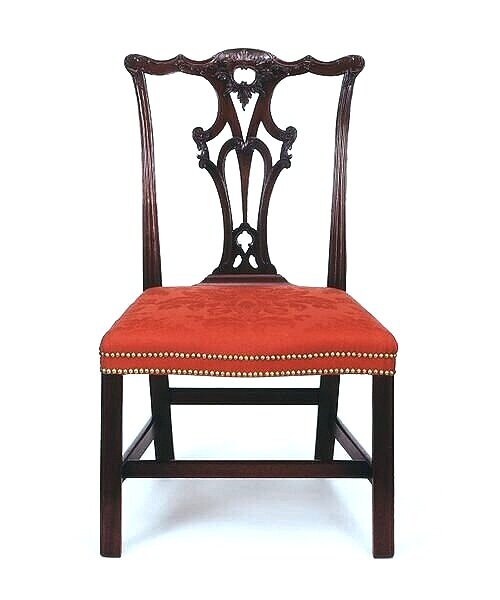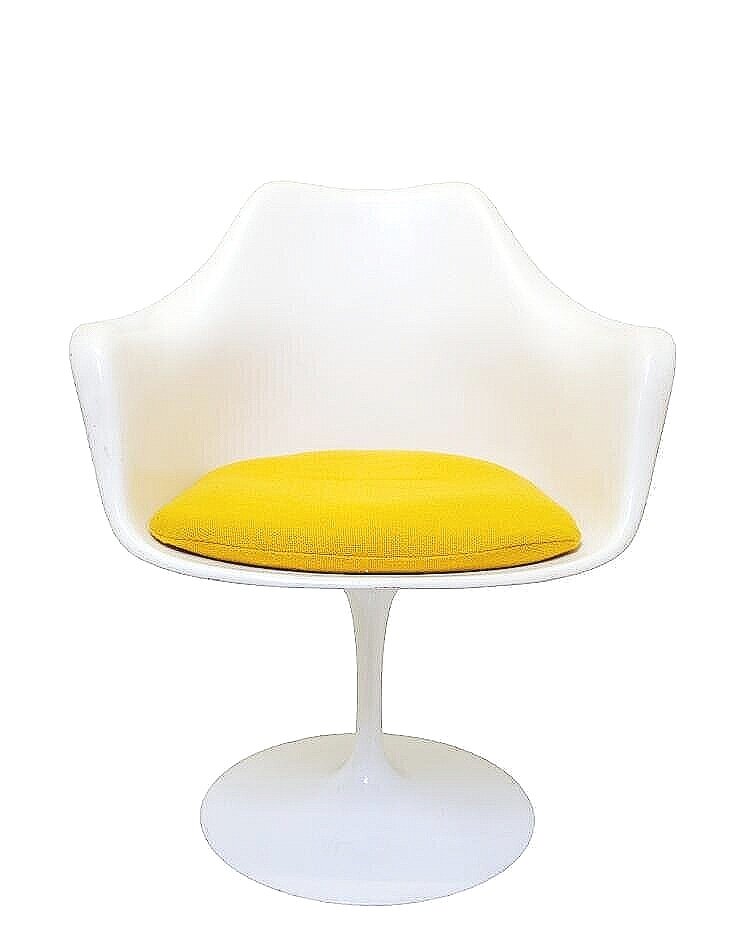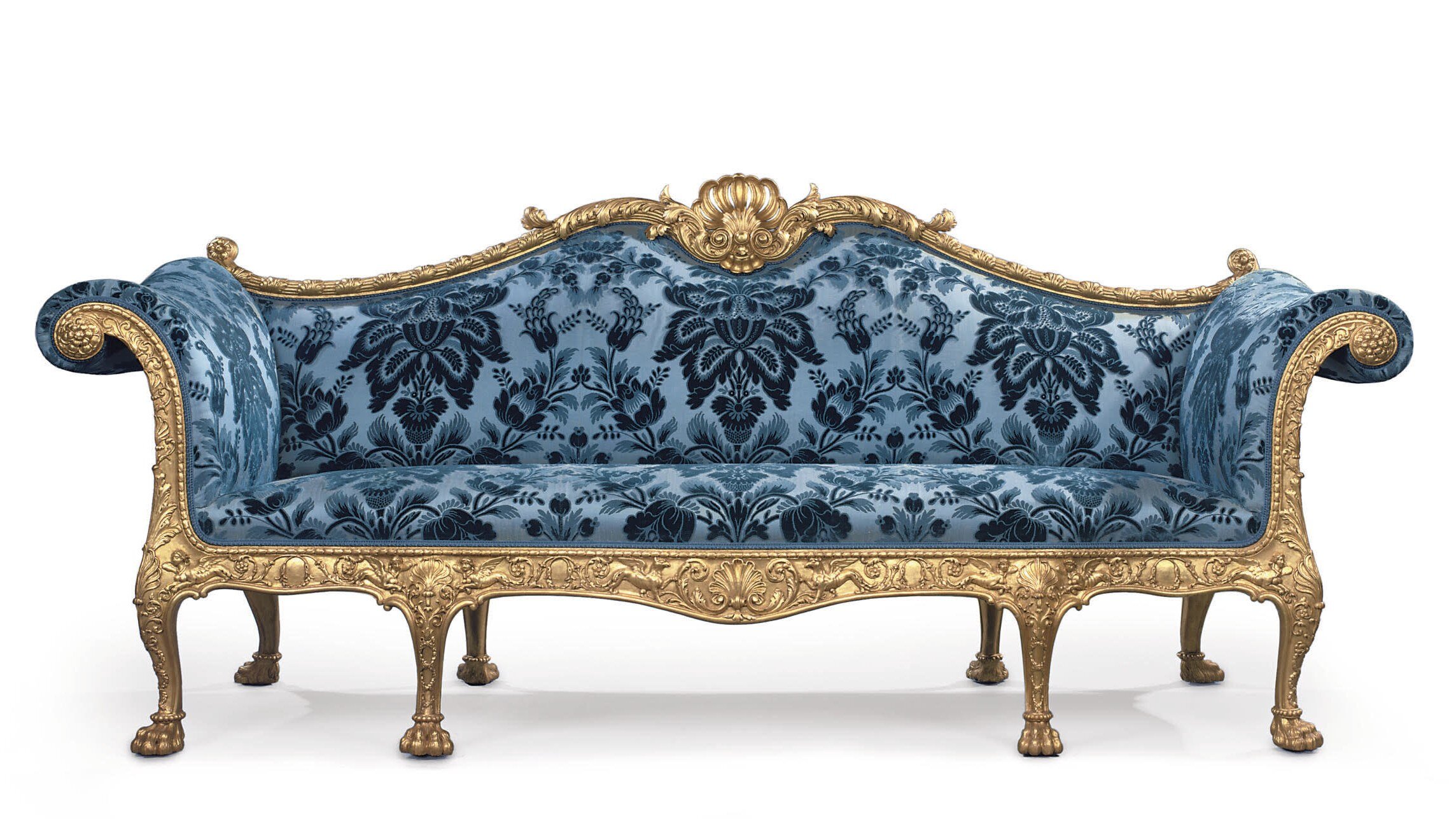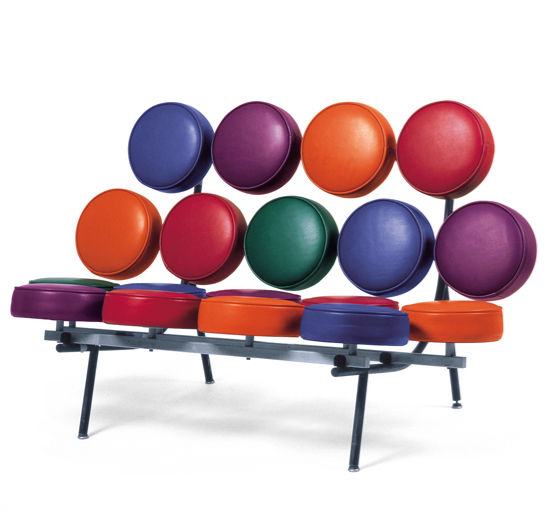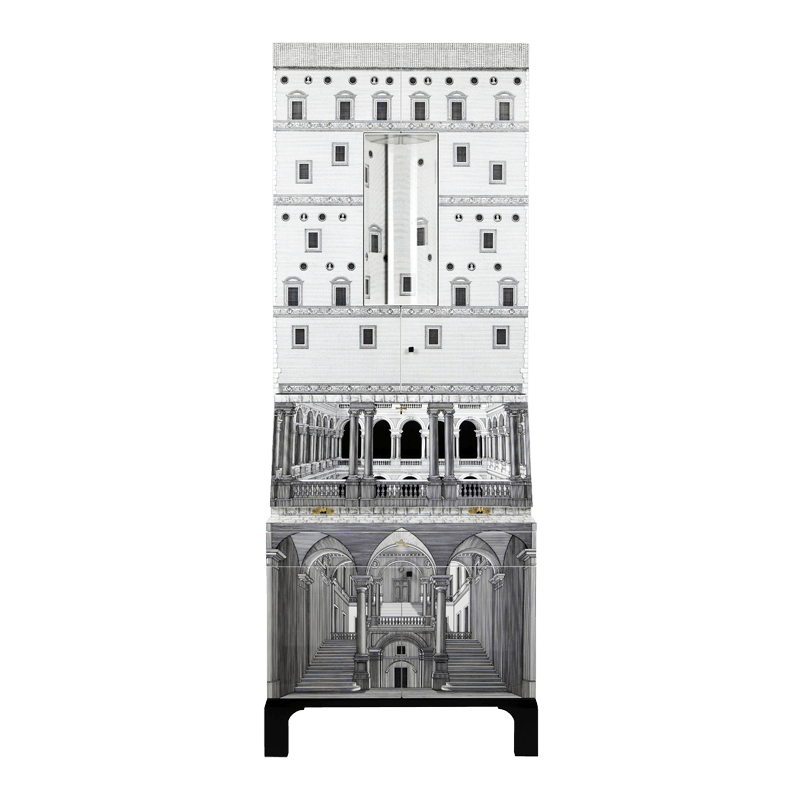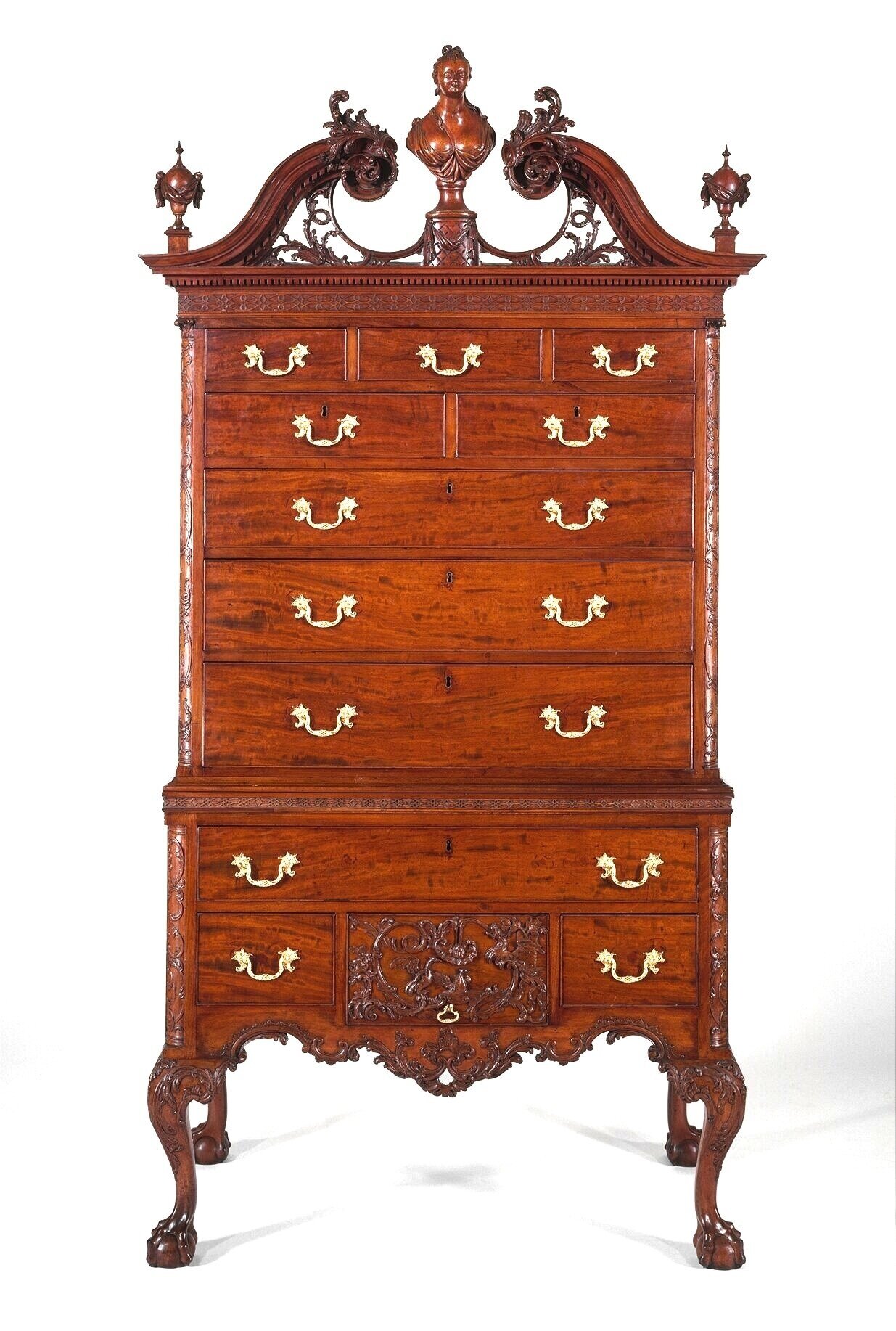Is Midcentury Modern the New Chippendale of Furniture?
Prevailing Historical Styles in the 21st Century
Due to the flu, I spent one childhood Christmas sofa-ridden. Since there was neither Nutcracker to attend nor a photoshoot with mall Santa, I instead worked my way through all movie VHS tapes on hand. Thanks to my father’s passion for spy thrillers, every James Bond film made to date was at the ready for sequential viewing. Sean Connery became a lulling companion for my addled sinuses. He was much more entertaining than North Pole elves, especially when it came time to confront his archenemy of the past hour. Ernst Stavro Blofeld in You Only Live Twice (1967) remains a favorite. You would think it was the unexpected fluffy feline on his lap that captured my attention. Rather, I was intrigued by his armchair. It was an unusual throne, particularly for a young viewer more accustomed to Disney backdrops. The upturned, wing-like ends of the G-Plan 6250 chair somehow enhanced the sitter’s deviousness. Little did I know that this Midcentury form and furnishings of its ilk would increasingly crop up as accent pieces in the next millennium. While Blofeld’s aspirations for global control didn’t come to fruition, his furniture aesthetic has taken dominion over the design world.
Watch a snippet of Blofeld in You Only Live Twice by clicking here.
Nowadays, it is de rigueur to possess one of these mod-thrones. It wasn’t long ago when the term “Midcentury Modern” sounded foreign to the ear. [1] A phrase that was once stubbornly underlined in red is now effortlessly recognized by my computer. People and technology alike have grown accustomed to a past style that is more retro than antique. However, a tasteful home in North America and the UK for decades frequently had a least one example of Chippendale-style furniture. But this tradition for the colonial look is disappearing in favor of furniture innovated during the mid-twentieth century by designers who aimed to fuse modernity, comfort, and mass production.
Is the Midcentury takeover of chic interiors a sinister event? Depends on who you ask. When it comes to family heirlooms, style can spurn inter-generational debate about which items should be treated as treasures and others disposable. And oh-the-horror for grandma to witness her highboy loaded into a rental truck heading to charity. Meanwhile, her great-nephew is likely thinking, “good riddance.” Similarly, a retiring couple planning to downsize are befuddled when their kids could care less about the long-esteemed walnut tea table and instead fight over the Danish lacquered credenza.
At this point, you may be asking, “What exactly is Chippendale style? And how about the parameters of Midcentury Modern?” Let’s time travel back then to furnishings of holidays past…
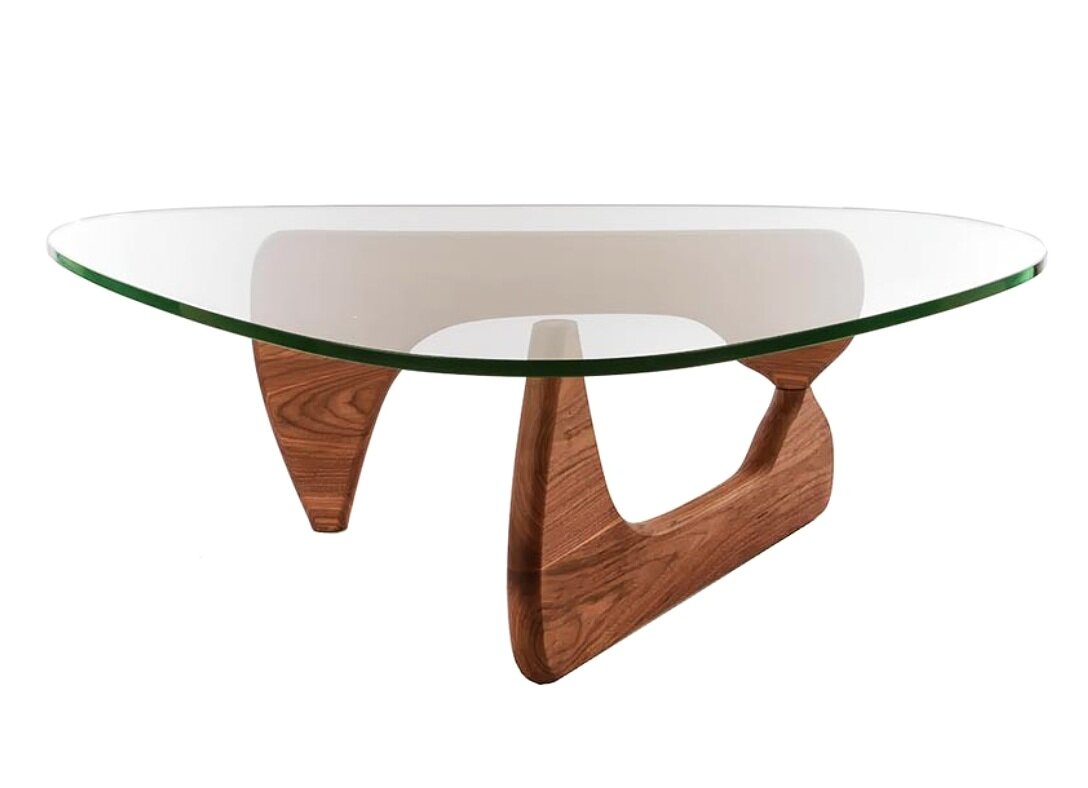

LEGACY OF CHIPPENDALE STYLE
This antique style received its namesake from the London cabinetmaker Thomas Chippendale. To promote his business, the entrepreneurial Chippendale published The Gentleman and Cabinet-maker’s Director in 1754. His pattern book contained 161 plates depicting movable furniture for the genteel household. Each piece showcased a flair for trendy details of Gothic, Chinese, and Modern (Rococo). The publication was the first in its scope for the English-speaking world and rippled throughout the Atlantic. So much so that it was issued two more times in 1755 (nearly identical as the first edition) and 1762 (enlarged and revised). Not only was the book successful in attracting clients for Mr. Chippendale, it simultaneously encouraged fellow cabinetmakers and patrons to use the illustrations as a starting point for inspiration. Consequently, “Chippendale” became synonymous with Rococo furniture made in Great Britain and its American colonies.
As decades turned into centuries, Chippendale still lingered as a viable option for fashionable homes. In particular, the United States experienced several colonial revivals (e.g., the 1870s, early 1900s, around 1976, and even the late 20th century).[2] These revivals became a means to display sophistication, family values, and patriotic interest in early national history.
THE NEW KID ON THE BLOCK: MIDCENTURY MODERN
Although Chippendale maintained its stature during the 20th century, a new kid on the block arrived as a radical alternative. Enter the game changer - Midcentury Modern. It was a design revolution that reflected a postwar, industrial world. Scholars generally agree the Midcentury era started in the 1930s and ended around the mid-1960s.[3] During this period, all aspects of material culture were impacted - from graphics and architecture to furniture and clothing. In the United States, a booming economy and a growing population catalyzed demand for a new kind of style that suited contemporary homes.
There are plenty of articles and blog posts that discuss what encompasses the Midcentury Modern aesthetic. Below is a word listing to inspire future research:
THE VIBE: organic, flow, open concept, lightness, optimism, playfulness, comfort. (A room’s mood should be positive and at ease.)
THE LINE: clean, streamline, tapered, slimmed, geometric, sleek. (Linear contours can be straight or sinuous as long as they’re smooth.)
THE ATTITUDE: function over form, multipurpose, pops of color, looking to the future. (Let utility guide the art form instead of additional embellishments. No carved scrolling acanthuses are to be found.)
ICONIC DESIGNERS: Ray and Charles Eames, George Nelson, Piero Fornasetti, Eero Saarinen, Charlotte Perriand, Marcel Breuer, Harry Bertoia, Arne Jacobsen, Ludwig Mies van der Rohe, Isamu Noguchi, Piero Fornasetti, Florence Knoll, Alvar Aalto, etc. ( Midcentury is an umbrella term and a useful way to describe an object when you don’t know the specifics.)
GLOBAL INSPIRATION: Bauhaus school, Scandinavia philosophy, Danish modern, Brazilian architecture, UK New Brutalism, California ranch house, Space Race, etc. (Like Chippendale, Midcentury is a hybrid of international philosophies.)
INDUSTRIAL MATERIALS: plastic, plywood, chrome, steel, foam, lucite, vinyl, lacquer (Materials are usually not costly with advances in technology and materials allow new furniture shapes never previously seen before.)
Perhaps from the buzzwords above, you already notice some themes and why retro continues to thrive. There is a Midcentury flavor for everyone and at a range of price points. Would you like something whimsical in the hall? Buy an original Fornasetti desk bookcase. Need a statement piece for your minimalist kitchen? Select a Saarinen Tulip table from a variety of sizes.
Certainly, other styles appeared on the scene over the years – Art Nouveau, Arts & Crafts movement, and Deco – just to name a few. However, none had quite the staying power of Midcentury.[4] Perhaps the appeal is partly due to our use of similar appliances, albeit updated versions. Vacuums and televisions continue to reincarnate. After all, Midcentury is a youthful style more easily adaptable to modern life, especially in contrast to forms invented in the 18th century. A Chippendale library cabinet or the aforementioned tea table was originally created within a language of refinement that is no longer pursued. Our means of displaying status has transformed into a seemingly more casual facade. Showcase your learnedness with a scattering of books on a Noguchi table. Usurp the social ritual of teatime with an espresso machine.
A MIDCENTURY REVIVAL
By the 1980s and 1990s, Midcentury Modern already began its resurgence with “vintage” taking on new meaning in the collecting world. Pop culture reflected a growing interest in history from a couple of generations ago rather than the founding forefathers. Similar to how the Chippendale style stimulated copies and iterations, Midcentury began to follow suit. Since most atomic age designs were no longer in production, manufacturers of the original lines began to reissue iconic pieces, thereby creating the first wave of reproductions. Many models were updated with slight variations, often with the latest material advances. Some companies also labeled their pieces so they would not be confused with originals, such as Knoll and Herman Miller. Yet like any good design, copycats abound despite copyright laws.
By the early 21st century, passion for Midcentury quickly became common. All types of media tapped into this cresting zeitgeist: museum exhibitions (e.g. "California Design, 1930-1965: Living in a Modern Way" at LACMA in 2001), television shows (e.g. Mad Men on AMC, 2007-2015), and lifestyle magazines (e.g. Dwell and Wallpaper*). Retailers kindly supplied home goods reflecting stylistic preference. The result? Midcentury-ish pieces are ubiquitous, much in the manner of the previous Chippendale.
ANALOGUE FURNITURE IN A DIGITAL WORLD
No matter which style we adopt, the cyber world has drastically changed everyone’s engagement with physical goods. Consider how a 21st-century existence is aggressively two dimensional through a series of screens. Smartphones are next to tablets in front of a wall-mounted television with a security alarm pad blinking in the corner. Meanwhile, ye olde furniture offers tangible focal points in an increasingly digital environment. Their sculptural qualities enchant. A bold silhouette can lure you with a siren’s call of kinesthetic play. “Come and sit,” the Eames lounge chair telepaths. “Stay and swivel for a while. Go ahead and rest your feet on my buddy the ottoman.” Be it Midcentury Modern or Chippendale, analogue furniture grows in charm with every software update.


A FUTURE LOOK
Will Chippendale style slowly fade away into the dark corners of consignment shops never to reemerge? Perhaps its popularity has finally waned much in the way of Renaissance and Elizabethan revivals.[4] Yet, Chippendale has been a mighty design survivor for centuries. Another comeback may still be in the works, ready to unfurl when yearning for the Rococo curve returns. And how long will Midcentury Modern maintain its current reign? After all, fashion cycles at a faster speed than ever before. I doubt it will take another three hundred years to encounter the next contender championing for dwelling in our hearts and hearth. Whichever furniture style prevails, it will have to command presence rival to that of a Bond villain.
IMAGES LIST
· A side chair for dining or playing at cards, designed by Thomas Chippendale. Source: Victoria and Albert Museum (London).
· A Tulip Chair designed by Eero Saarinen, 1955-56. Source: Museum of Modern Art (New York).
· Photograph of actor Donald Pleasance as Blofeld seated in 6250 chair made by G Plan, 1962: Wikipedia.
· A coffee table designed by Isamu Noguchi, 1947. Source: Wikipedia.
· A round tea table made in Philadelphia, circa 1765. Source: Metropolitan Museum of Art (New York).
· A giltwood sofa made by Thomas Chippendale, 1765. Source: Christie’s (London).
· A Marshmallow Sofa designed by George Nelson, 1956: Source: Vitra Design Museum.
· An Architettura Trumeau-Bar designed by Gio Ponti and modified by Piero Fornasetti, circa 1951. Source: Fornasetti (Milan).
· A high chest of drawers made in Philadelphia, 1762–65. Source: Metropolitan Museum of Art (New York).
· An interior room drawing by John Linnel, circa 1755. Source: Victoria and Albert Museum (London).
· A living room watercolor by Patalano. Source: Etsy.
About the Author: Courtney Ahlstrom Christy is Co-Editor of Worthwhile Magazine and Principal Appraiser of Ahlstrom Appraisals LLC. Courtney can be reached at ahlstromappraisals.com.
© Courtney Ahlstrom Christy 2019
FOOTNOTES
[1] Two variations of the spelling of “Midcentury” and “Mid Century” are commonly used and both accepted. Author Cara Greenberg coined the phrase as the title for her 1984 book, Midcentury Modern: Furniture of the 1950s. Source: Laura Fenton, “Why the world is obsessed with midcentury modern design” in Curbed (April 8, 2015).
[2] Chippendale revivals in the United Staes are due in part to celebrating nationhood during the 1870s centennials and 1970s bicentennials.
[3] If it would make you more comfortable to have a specific year range for Midcentury Modern, shall we say 1933 to 1965?
[4] When was the last time you saw a cassone outside of a museum let alone covet it for your hallway? Do you even know what a cassone is? I rest my case. (Furniture historians and lovers of the Renaissance are excluded from this line of inquiry.)

